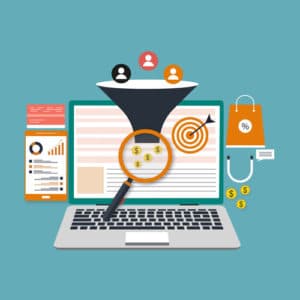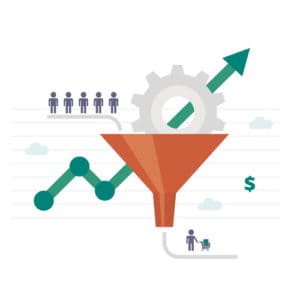Target Market
Get a visual of your ideal customer to find more of them
Convert Search Marketing Results Into Your Lifetime Customers
At Terzetto Digital, we help you to Get Focus on who will buy from you. This audience segmentation guides content creation to speak to that perfect buyer and is in each integrated digital marketing plan.
Just another way that we are committed to working with you to achieve success and to help you Harmonize Your Digital Marketing℠.

What is a Target Market?
When the idea of a business starts to germinate in the mind of an entrepreneur, they are already starting to determine whom they will cater to, or what problems they will solve. Be it a product or service, it all starts with fulfilling the needs of an explicit person or group. Will the small business satisfy the desires of a specific age, gender, economic profile, marital status, family size, and geographic location, or is the focus more on how that business can benefit a particular group of users that face a common difficulty? Whatever the reason, this focal point is generally called a “target market”. It represents the audience that is optimal for a particular product or service, those individuals or clusters that stand to gain the most from purchasing the goods or getting the work performed.
There are potentially millions of buyers for your products or people that need your services. But what if you could isolate that into the thousands that would benefit the most, then sell to the hundreds that would keep coming back for more? Think of it like a funnel, which is larger at the top to catch the most, but very narrow at the bottom to focus on the best. Those at the top of the funnel may be there by mistake or are not ready to make a purchasing decision, therefore you’ll need to spend more time and money on local advertising to educate and inform them about your solution. What you want are those closer to the bottom, the ones that have a definitive need that your product or services can fill. That is the essence of a target market, to refine your digital marketing strategy such that your digital advertising speaks to that highly focused group and is, therefore, more likely to convert them into paying customers.

Defining your target market starts with thinking about these four components:
-
-
- The “who”: Demographics
Who needs your product or service? Includes basic demographic details such as age, gender, family size, educational level, and occupation. - The “where”: Geographics
Where are your customers? These are the places your customers can be found, which can cover an area as small as a local zip code to all the way to across oceans with a global scope. - The “why”: Psychographics
Why do your customers make the choices they make? This is personality and lifestyle information that will help you figure out your customers’ buying patterns. - The “how”: Behaviors
How do your customers behave? All customers are buying products to fulfill a need, but how do they regard that need?
- The “who”: Demographics
-

Where Would a Target Market be Used?
You’ll want to determine your target market as soon as possible because it can guide many aspects of your business development. It is typically defined at the strategic planning stage, where it can best align with your brand mission, vision, and messaging. Beyond helping you in product design or picking a retail location, your target market will inform your entire digital marketing strategy:
- Creating Personas – These are representations of your target market, that perfect customer description, complete with either a photograph of a real person or a graphical representation in the form of an avatar. This puts a face and name to your target market, making it easier to visualize content creation for “Jessica, the Purchasing Manager” as opposed to “a female aged 30 – 40 working in a professional business capacity”. There is no limit to the number of personas that you can create, it is simply a matter of breaking down the four main components of who, where, why, and how into a familiar face, then talking to them as if they were real to convey the right message at the right time to get them to buy your product or service.

- Organic SEO – If you want your business to get found on Google, you need keyword research to help determine what your prospects are searching on to find your solution. This is where your target market definition can improve your search engine optimization by focusing your website content on the keyword phrases that best convey the user’s search intent. Let’s says you have a software product designed to help purchasing managers buy more in less time. Your perfect customer, Jessica, is frustrated with how much time she wastes with retyping purchase orders that get faxed to her. She searches on “how to scan PO’s”, because in her mind that would solve her problem and she’s searching based on her lingo. But you never researched the pain points of your target market, so you don’t have any features or blog posts that address her needs, thus she never finds your solution. Knowing your target market is how to improve SEO.

- Market Share – What if you could see your competitor’s advertising strategy, to know the exact way they are using eCommerce marketing for their products or why their social media presence is better than yours? Once you know your target market, you can use competitor analysis to discover how they are winning those customers, giving you the ability to gain market share by mimicking what is working for your competition. Although it can happen, it’s rare that you would come to market with a product or service that is not already being sold. Understanding the audience for your goods or solutions can reveal competitors that you may not have known existed. Let’s go back to Jessica, who is using specific software to scan her purchase orders because that competitor understood that although archaic, businesses still use faxes today. You find that companies website and decide you’ll never support scanning because it’s not right for your approach, but you can see how writing a few blog posts about online PO’s verse faxing might help you convert Jessica into a customer.

When Would a Target Market be Used?
Recognizing your target market early on in your startup can benefit your sales tremendously if applied in all your digital marketing. From the color of your logo to the words on your website, attracting that perfect customer among all the noise from other digital media marketing is more important than ever:
-
-
- Website Design – What goes into you small business website or ecommerce website design can have a huge impact on both usability as well as searchability. You’ve got to infuse both local marketing and search marketing into your website content for that perfect balance of content marketing that will appeal to your target audience.
-
-
-
- Digital Advertising – As you expand your content marketing strategy into paid search, you’ll realize the cost for pay per click advertising necessitates knowing your target market in advance. Otherwise, it’ll be a costly lesson in how to get traffic to your website that will never convert!
-
-
-
- Social Media Marketing – The advantages of social media content is that it can be easily shared among peers. It’s likely that your target market will have friends or professional relationships that could also benefit from your solution. For example, creating a social media campaign using Facebook Custom Audiences is an easy way to reach the extended network of your target market.
-
-
-
- Email Marketing – The best email marketing service will allow you to do both segmentation and personalization. By splitting your target market into a separate email marketing campaign, your content creation can speak directly to that segment’s unique needs. When you add in personalization, such as “Hi Jessica, we know that as a Purchasing Manager…”, you increase the likelihood that she will both read and click through to your website landing page.
-
-
-
- Video Marketing – Using similar demographics, psychographics, or geographics in your marketing videos provides familiarity to your target market. If Jessica sees other female professionals in her approximate age group working in an office, she’ll likely identify with that environment and be more open to watching your explainer videos.
-
-
-
- Reputation Management – People read reviews before they commit to a purchase, whether for a product on an ecommerce website or a local service, they want to understand the experience of others. When it comes to your target market, how you address online reputation management will impact your bottom line.
-
Who is a Target Market For?
Any small business that wants to dominate in their market niche should focus on a target market strategy. Website marketing takes time and effort, so it’s better not to waste either on people who really don’t need or want what you are offering. It’s never too late in your digital marketing plan to define your target market:
- Startup Stage – The advantage here is that you can include your target audience in every aspect of your new venture. You’ll also be able to pivot faster should you find that you missed the mark when you visualized your ideal customer. By quickly discarding improper personas, you can increase conversion optimization and continue to grow your new business.
- Established Business – The best thing you have if you’ve been in business for many years is a customer base to draw from. You can contact your best customers to interview them as to the reasons they buy from you or use your services. If you are not comfortable with that approach, you could leverage on your years of financial and marketing analytics to determine the who or why of the purchases. Either way, these people can become your personas, no longer fictionalized, but real people that you can then emulate to gain more of them.
How Much Does a Target Market Cost?
Not considering to whom you’ll be selling your goods or solutions to as part of your content strategy can be very expensive. However, defining your target market in advance of sales does not have to be expensive. It comes down to knowing the benefits of your product or service, what problems your potential customers might have, and good research on the who, where, why, and how of your audience.
- Products – Start by defining what your product does and the main ways it can benefit the buyer. Then think about any optional add-ons that your product has and list those benefits. Finally, read reviews from other e-commerce websites that sell a similar product to gain insights into what problems the reviewer had that the product was able to solve.
- Services – List all the advantages for the buyer if they use your services verse a do-it-yourself approach. Highlight any legal considerations they should be aware of if considering another vendor who offers the same service. As with product reviews, you can also read service reviews to gather valuable information as to the reviewer’s perception of what the service was supposed to provide as compared to the result.

With this awareness, you’ll be able to better define your target market without breaking the bank, especially since target market is included at no additional cost in each integrated digital marketing plan.
Are You Ready to Get Focus and Convert Your Target Market Into Your Lifetime Customers?
All Digital Marketing Plan Levels Include Target Market

You'll Get Focus With These Featured Services

Persona Development
| Starter Plan | Growth Plan | Pro Plan |
|---|---|---|
Buyer personas are fictional, generalized representations of your ideal customers. They help you understand your ideal customer better, making it easier to tailor content to the specific needs, behaviors, and concerns of different groups.

Keyword Research
| Starter Plan | Growth Plan | Pro Plan |
|---|---|---|
Discovering the keywords your target market uses to find your product or services will help drive traffic to your website. Search intent will help find topic keywords that can be used for content and social media marketing.

Competitor Analysis
| Starter Plan | Growth Plan | Pro Plan |
|---|---|---|
They say to keep your friends close and your enemies closer. Understanding how your competitors are marketing gives you the opportunity to gain market share by finding the prospects they are missing.


